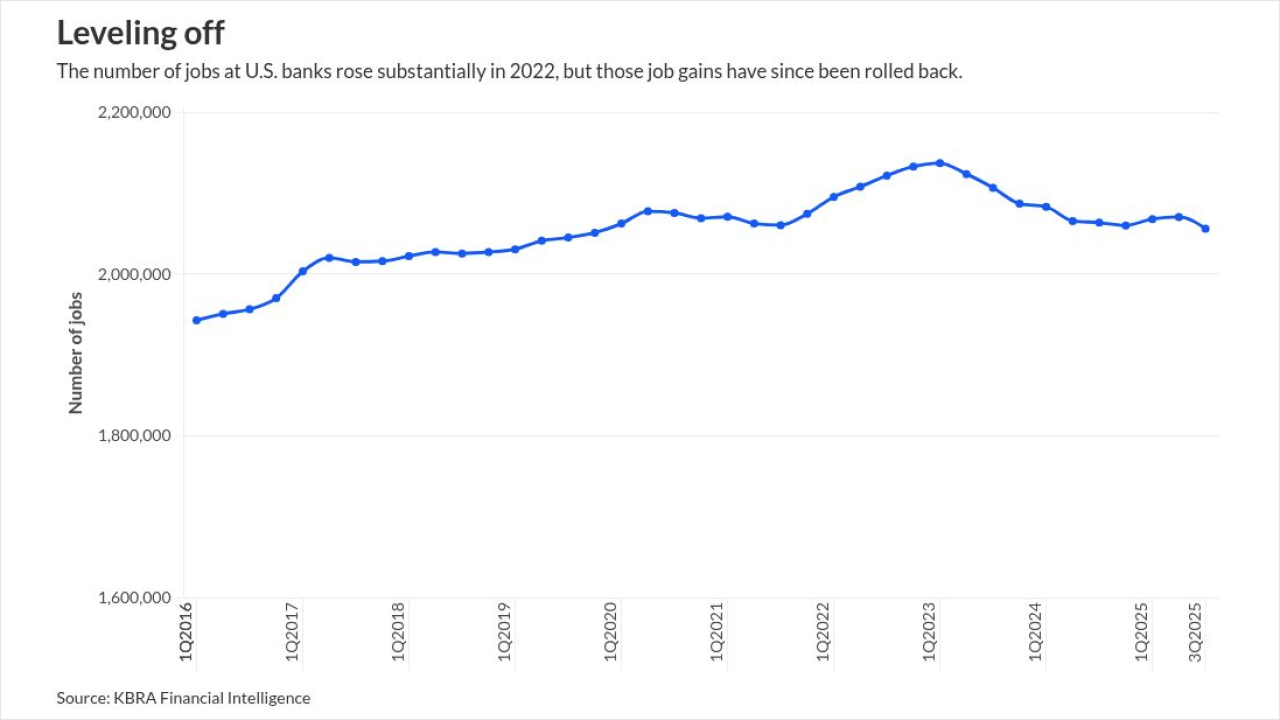- Key insight: U.S. Bank's stablecoin pilot is part of a broader trend in which banks are moving toward tokenized settlement.
- Supporting data: Stellar supports about 1,000 transactions per second and native asset-freeze and trust-line controls.
- Forward Look: Prepare for regulatory rulings that will determine banks' stablecoin deployment timelines.
Source: Bullets generated by AI with editorial review
U.S. Bank is testing stablecoin issuance on the Stellar network. The announcement was made on the U.S. Bank Money 20/20 podcast "The Tokenized Future of Banking."
The Minneapolis bank declined to share details about the test, such as its scale, scope and timing. "We see a lot of opportunity in the digital asset and stablecoin space," a spokeswoman told American Banker. "And we plan to keep learning through various proof-of-technology tests and pilots that take different approaches, so we're prepared to offer products and services that will best serve our clients when the time is right."
In October, U.S. Bank was named
Many large U.S. banks are exploring the idea of issuing their own stablecoins, but none have done it so far. In
Among smaller institutions, St. Cloud Financial Credit Union in Minnesota has issued a stablecoin, while Custodia Bank and Vantage Bank have jointly launched one.
"U.S. Bank could become the first major institution to issue a stablecoin," Tiffani Montez, principal analyst, financial services, at Emarketer, told American Banker. "But leadership will hinge on its ability to scale safely within regulatory guardrails and deploy a token that complements, not cannibalizes, its deposit funding model."
One reason that U.S. Bank chose the Stellar network was its ability to support banks' compliance needs, according to Mike Villano, senior vice president of enterprise innovation at U.S. Bank.
"Stablecoins are faster, cheaper, 24/7, and that's true out of the box," Villano said during the podcast. "But for bank customers, we have to think about other protections around Know Your Customer, the ability to claw back transactions, and one of the great things about the Stellar platform was that they have the ability at their base operating layer to freeze assets and online transactions. Often, you might write that into the business logic itself, but in this instance you can do it at the core blockchain layer. So that was very interesting to us."
José Fernández da Ponte, president and chief growth officer of the Stellar Development Foundation, said Stellar's distributed ledger was built 10 years ago with financial institutions in mind. For instance, on many decentralized networks, the entities that validate transactions are anonymous. On the Stellar network, validators need to declare who they are, a feature that appeals to regulated companies that need to know the identity of the people with whom they're doing business.
Another Stellar feature is trust lines — explicit agreements that accounts make to hold and transact with any asset on the network.
"One of the issues that you have on blockchains is that people might drop tokens in your wallet that you don't want to receive," da Ponte told American Banker in an interview.
The Stellar network's trust lines let users specify that they only want tokens in their wallets that are coming from certain issuers, so they can make sure they are not receiving tokens from less reputable issuers or from people in sanctioned countries. Such controls can be built into smart contracts on the Stellar network. New York regulators, for one, require stablecoin issuers to have such controls, he said.
"We are making sure that people who are building on top of Stellar can comply with the regulation, obviously, but also that the tools for them to define what they want to do at the application level are available in the network if you want from off the shelf, and they don't need to build that again."
U.S. Bank was also looking for a network that could accommodate high transaction speeds.
According to da Ponte, Stellar was built for speed in a way that blockchains like Ethereum were not.
"If you're working on retail payments, you need to be able to do at least 1,000 transactions per second," he said. "And there are only a few blockchains who can do that. We are one of those."
Several crypto companies, including Circle and PayPal, issue stablecoins on Stellar. Other providers of infrastructure for issuing stablecoins include BNY, Anchorage Digital Bank and Cross River Bank, which announced its offering Wednesday, as well as crypto companies Circle, Paxos and Metallicus.
"U.S. Bank's pilot on Stellar signals that stablecoins are entering their institutional phase, with banks starting to evaluate how tokenized dollars could operate as real, regulated settlement infrastructure rather than experimental proofs of concept," Montez said.
"This moment matters for the sector because large institutions are now testing the mechanics of issuance, reserves and interoperability, and once regulation provides clearer lanes, the banks that move fastest will shape how programmable, yield-bearing digital money fits into core banking functions, including liquidity, payments and customer value."






